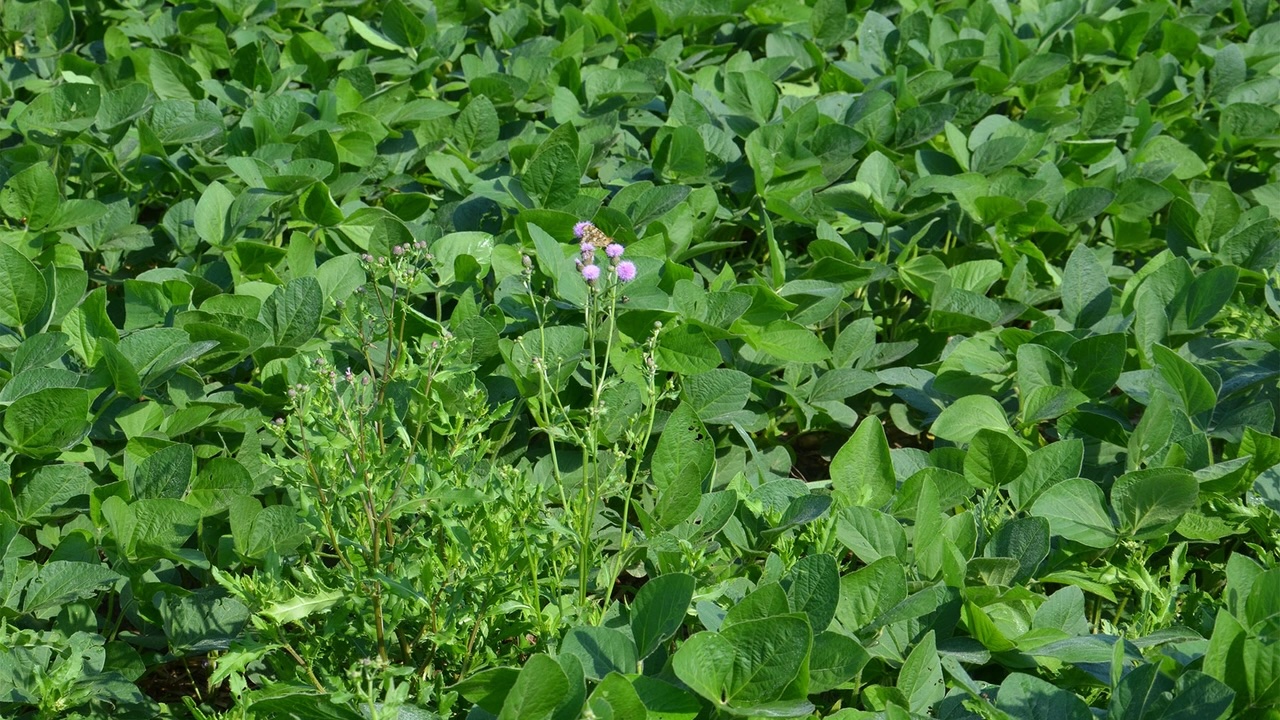Start here to control Canada thistle

Answers are from the Indiana certified crop adviser panel: Dan Ritter, Dairyland Seed agronomist, Rensselaer; Bryan Overstreet, soil conservation coordinator, Rensselaer; and Steve Gauck, Beck’s Hybrids, Greensburg, Ind.
We had patches of Canada thistles in a couple soybean fields this year. In fact, I have fought the same patches for several years. I am tired of it and want to knock them out. What can I do, starting now, to eliminate this problem from my fields in the future?
Ritter: A multifaceted, multiyear approach will be the most successful, but you can certainly get a great start this fall with a burndown type of herbicide application. Target those fields earlier in your harvest schedule to make that herbicide application at a time when it would be most effective. An additional option would be no-till. Tillage does a great job breaking up roots and spreading them across the field, where they can then regenerate and colonize another portion of the field.
Attacking thistles while in corn is an excellent option. There are a few more herbicide options available in your toolbox. The following year, in crop with soybeans, consider a two-pass system using a herbicide with good efficacy on Canada thistle.
Overstreet: I would start with applying glyphosate on those areas as soon as you get leaf drop of soybeans. The next step is reducing tillage. Every time you do tillage, you break apart the root and create more plants. If you are planting corn next year, Hornet or Stinger are good products to apply to Canada thistle. They are most effective when the plant is in the rosette stage, before it gets too tall.
If you are going back into soybeans and they are glyphosate resistant, spray with glyphosate once thistles are 6 inches or taller. This can be a tough weed to control, so it may take more than one treatment to get it all.
Gauck: Fall applications of a herbicide that targets Canada thistle is the best and most effective way to start. New shoots will emerge in September, and growth helps feed underground roots for next spring. Thistles reproduce by seed and creeping roots. To get long-term control, you must use an herbicide that will translocate to the root system.
A fall application of glyphosate and 2,4-D or dicamba, followed by another application in the spring for any missed plants, provides a great start to controlling thistle. This could be a multiyear project to make sure all roots are killed. If the field is going to corn, use a clopyralid and flumetsulam combination to help add a different mode of action. Ultimately, it will take some time and persistence, but they are controllable.

